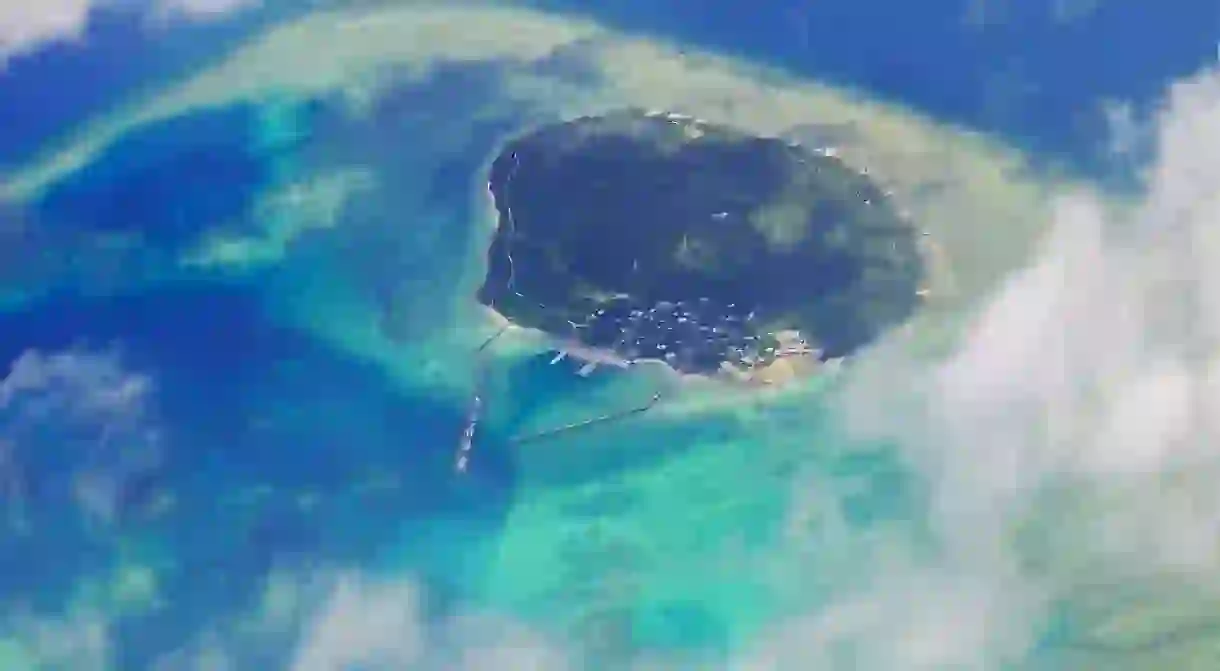The Yaeyama Islands Are Japan’s Must-Visit Hidden Treasure

Scattered across Japan’s south-western waters, the Yaeyama Islands are truly a hidden gem. White-sand beaches, colorful coral reefs, and sub-tropical rainforests comprise a unique, enchanting landscape. Though not as remote as they once were, these tiny islands offer a wealth of unspoiled natural sights and thrilling experiences, from traditional Okinawan architecture to unexpected culinary delights.

The Yaeyama archipelago is situated on the far southern edge of Okinawa prefecture and consists of 10 inhabited islands and several islets. Their geographical proximity to China and Southeast Asia allowed exotic influences to subtly settle in and complement Okinawan life. Thanks to efficient infrastructure development, all Yaeyama islands can be easily accessed today, but they’ve still managed to escape the crowds of mass tourism. What’s more, each island preserves its own cultural features and displays distinct natural scenery, from Iriomote’s mangrove jungles to Kohama’s vast sugarcane fields. The people of Yaeyama have developed a profound love for their homeland, embodied in the word wagashima, ‘my island’, which is used to describe the place they live.

Ishigaki is the most populated and most developed island of the Yaeyama archipelago and serves as the region’s main transportation hub. Unlike the typical Japanese metropolis, life in Ishigaki city has a rather leisurely pace. Its downtown area is compact and can be easily explored on foot. Besides the city’s few avenues, the visitor can enjoy quiet strolls in narrow streets among traditional wooden residences, gardens and neighborhood tea houses.
Okinawans are known for taking life easy as well as for their hospitality, and spontaneous invitations for tea are to be expected. There is also an interesting selection of traditional crafts and local produce shops to explore around the city’s busy port, such as ceramic shiisa statues, said to keep away evil, or the Japanese favorite Ishigaki salt. The salt is so popular, it can be found on sweets and ice cream, promising a surprising pleasure for experienced and inexperienced taste buds.

In culinary terms, Ishigaki is quite fascinating, a place where Japanese finesse meets tropical paradise. The island is famous for its beef, considered among the world’s best. Tender yet robust, it is served in thin slices complemented by thick grains of salt and the bitter tasting goya, Okinawa’s most cherished vegetable. Tropical fruits and a variety of local vegetables and seaweed, cooked or candied, give a very distinct character to Yaeyama cuisine. All this is to be enjoyed with awamori, Okinawa’s traditional eau-de-vie, made from rice and spices.

The highlight of Ishigaki island is, however, its lush landscape and magnificent beaches. Fringed by beautiful coral reefs, the island has become a popular diving and snorkeling destination. Located on the north-western shore of the island, Kabira Bay is a famous spot for water sports, while the capes of Uganzaki and Hirakubo offer splendid views over the island’s idyllic scenery and Mount Nosoko.

In close proximity to Ishigaki, Taketomi island offers a glimpse of older, rural Okinawa. Small and flat, the island can be explored by bicycle in a few hours. Quaint Taketomi village is a short, 10-minute walk from the ferry terminal. It features narrow, unpaved streets and traditional-style houses with stone walls and fragrant gardens. Most houses have red-tiled roofs decorated with shiisa statues, which can be best viewed from Nagomi tower in the center of the village. An alternative, but slightly touristy and slow method of transportation is the ‘ox taxi’, a favorite amongst tourists. Taketomi’s highlight is the beautiful Kondoi Bay, popular for its emerald and shallow waters. In the south of the bay lies palm-covered Kaiji Beach, a famous place to search for ‘star sand’. Indeed, Japanese tourists come to Kaiji in search of these tiny, star-shaped living fossils.

Kohama and Kuro islands can be visited as a day trip from Ishigaki. Kohama island is covered with sugarcane fields and has a few beautiful and peaceful beaches. Visitors into landscapes cannot miss Kohama, as the island offers spectacular views over the Yaeyama archipelago. Sparsely populated Kuro Island is a popular destination for snorkeling as it is surrounded by pristine coral reefs, and several beaches on the island offer habitat to sea turtles.

Japan’s southernmost inhabited island, Hateruma, is home to one of Asia’s most magnificent beaches, Nishihama. The beach is accessible on foot from the island’s ferry terminal. White, powder sand, clear turquoise water and beautiful coral offshore make for an arresting sight. On the opposite side of the island is Takanasaki, a one-kilometer limestone cliff overlooking the Pacific Ocean. At the end of the cliff lies a monument marking Japan’s southernmost point, a favorite photo spot.
Iriomote island boasts the wildest and most untouched natural landscape in the Yaeyama island chain. Almost 90 percent of the island is covered by mangrove forests, while inhabitants reside on a skinny piece of land on the north and east side of island. Iriomote’s Urauchi River, the largest one on the island, can be explored by a river cruise. The cruise includes an hour walk among dense tropical vegetation to a gorgeous open plateau and waterfall.

Wonderful beaches are to be found all around the northern shore of the island, but the most beautiful, and surprisingly quiet, is Ida-no-hama. This secluded, gorgeous bay is located at the western end of the north coast road and can be accessed by boat and a short walk from the port of the isolated village of Funauki. The wild forests of Iriomote are also the natural habitat of the Yamaneko, a nocturnal wildcat that is considered an endangered species.













